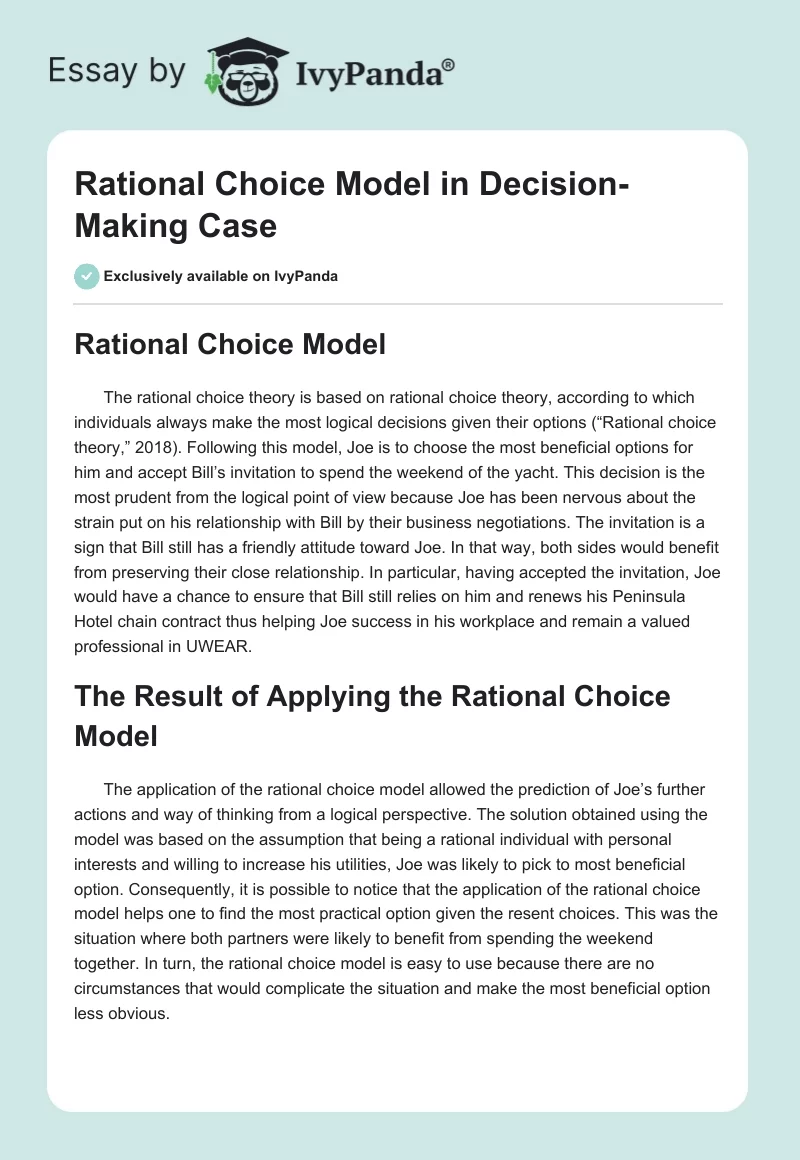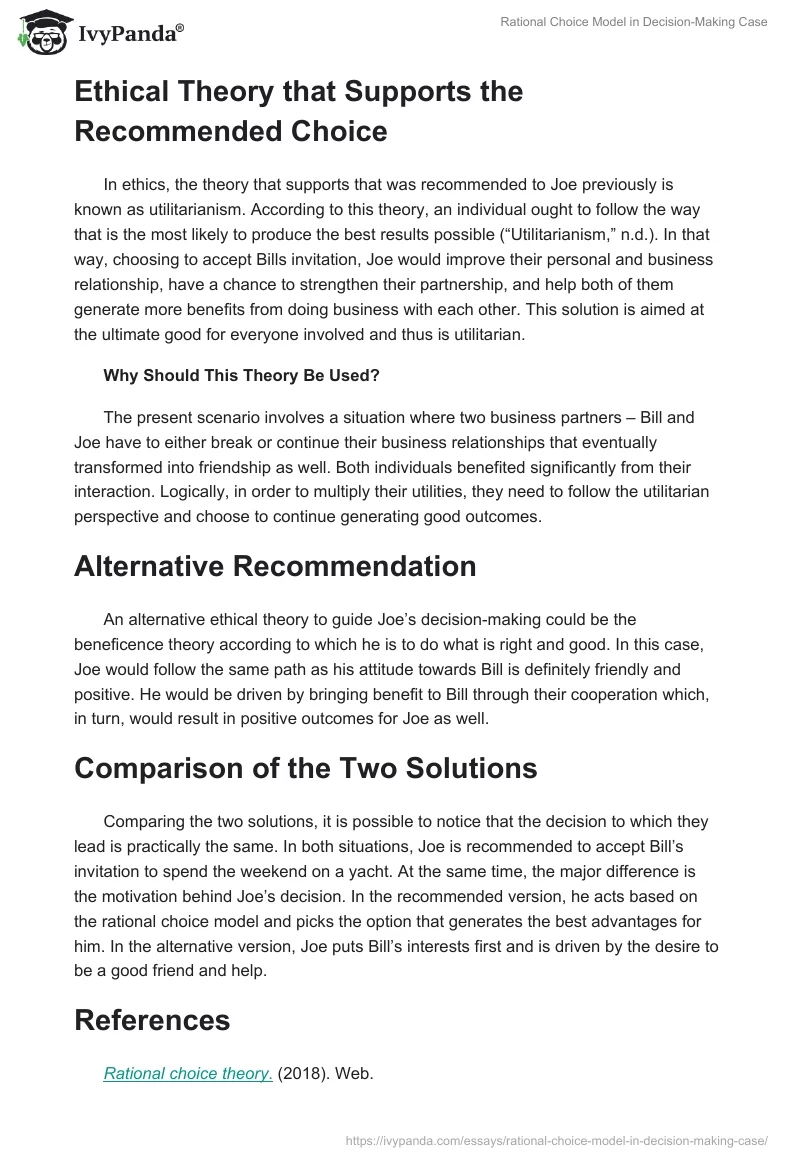Rational Choice Model
The rational choice theory is based on rational choice theory, according to which individuals always make the most logical decisions given their options (“Rational choice theory,” 2018). Following this model, Joe is to choose the most beneficial options for him and accept Bill’s invitation to spend the weekend of the yacht. This decision is the most prudent from the logical point of view because Joe has been nervous about the strain put on his relationship with Bill by their business negotiations. The invitation is a sign that Bill still has a friendly attitude toward Joe. In that way, both sides would benefit from preserving their close relationship. In particular, having accepted the invitation, Joe would have a chance to ensure that Bill still relies on him and renews his Peninsula Hotel chain contract thus helping Joe success in his workplace and remain a valued professional in UWEAR.
The Result of Applying the Rational Choice Model
The application of the rational choice model allowed the prediction of Joe’s further actions and way of thinking from a logical perspective. The solution obtained using the model was based on the assumption that being a rational individual with personal interests and willing to increase his utilities, Joe was likely to pick to most beneficial option. Consequently, it is possible to notice that the application of the rational choice model helps one to find the most practical option given the resent choices. This was the situation where both partners were likely to benefit from spending the weekend together. In turn, the rational choice model is easy to use because there are no circumstances that would complicate the situation and make the most beneficial option less obvious.
Ethical Theory that Supports the Recommended Choice
In ethics, the theory that supports that was recommended to Joe previously is known as utilitarianism. According to this theory, an individual ought to follow the way that is the most likely to produce the best results possible (“Utilitarianism,” n.d.). In that way, choosing to accept Bills invitation, Joe would improve their personal and business relationship, have a chance to strengthen their partnership, and help both of them generate more benefits from doing business with each other. This solution is aimed at the ultimate good for everyone involved and thus is utilitarian.
Why Should This Theory Be Used?
The present scenario involves a situation where two business partners – Bill and Joe have to either break or continue their business relationships that eventually transformed into friendship as well. Both individuals benefited significantly from their interaction. Logically, in order to multiply their utilities, they need to follow the utilitarian perspective and choose to continue generating good outcomes.
Alternative Recommendation
An alternative ethical theory to guide Joe’s decision-making could be the beneficence theory according to which he is to do what is right and good. In this case, Joe would follow the same path as his attitude towards Bill is definitely friendly and positive. He would be driven by bringing benefit to Bill through their cooperation which, in turn, would result in positive outcomes for Joe as well.
Comparison of the Two Solutions
Comparing the two solutions, it is possible to notice that the decision to which they lead is practically the same. In both situations, Joe is recommended to accept Bill’s invitation to spend the weekend on a yacht. At the same time, the major difference is the motivation behind Joe’s decision. In the recommended version, he acts based on the rational choice model and picks the option that generates the best advantages for him. In the alternative version, Joe puts Bill’s interests first and is driven by the desire to be a good friend and help.
References
Rational choice theory. (2018). Web.
Utilitarianism. (n.d.). Web.


